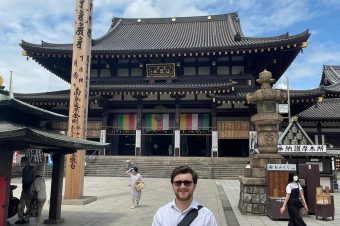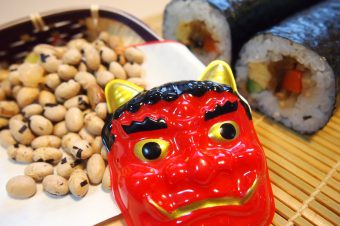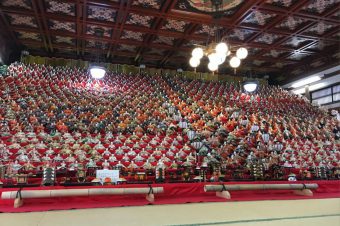Every New Year’s Eve, Buddhist temples across Japan ring their bells exactly 108 times. The ringing starts late into the evening and continues on into the first day of the year. The most common and popular theory as to why this occurs is that each ring of the bell represents one of 108 earthly desires being cast away. These 108 earthly desires are referred to as “bonnou” and they are believe to be the cause of human suffering. Examples of these desires are lust, materialistic desires, and so on. While this theory is popular and common, there are also two other theories. Altogether, Japanese people believe in one of the three concepts.
As previously covered, the most common belief is that the 108 bell ringings represent the 108 desires of bannou. The 108 desires stem from the six physical elements of human life, as classified by the Buddhist religion: eyes (sight), ears (sound), nose (smell), tongue (taste), body, and mind. These six elements each contain three categories: good, evil, and normal, thus resulting in 18 desires. These 18 desires are then broken down into either pure or contaminated, bringing the total to 36. Finally, those 36 are classified as being a part of your past, present, or future, coming to a grand total of 108 earthly desires. Believers of this theory say that ringing the bell 108 times cleanses your soul of these desires so that you enter the new year refreshed and untarnished.
The second theory states that the number 108 comes from the calendar year. Believers of this concept say that the number of months in a year, 12, is added to the number of seasonal divisions in the solar calendar, 24, and then finally added to the number of seasonal divisions of the ancient Chinese calendar, 72, creating a total of 108.
The final theory is that the bells represent human suffering. The concept of struggling and suffering is represented in the Japanese language as “shiku-hakku,” which can be directly translated as “four nines, eight nines.” The portion of the word “ku” is a homonym of the root “ku” which is used for words relating to struggling and suffering. The “four” in the word refers to the four types of pain and suffering: life, age, disease, and death, while the “eight” refers to another set of types of suffering. These eight are composed of the following: the pain of never achieving your goals/desires, the pain of envy/jealousy, the pain of saying goodbye to a loved one, the pain of not being able to control your body or mind, and the four stated before, the pain of life, age, disease and death. When you multiply 4 by 9 and then 8 by 9, and then add those numbers together, it comes to a total of 108.
Whatever theory you believe in, listening to the ringing of the bells and taking part in the traditional Japanese New Year’s festivities is a truly unforgettable experience that you won’t want to miss.
Latest posts from jtast
- Gotokuji Temple - August 3, 2023
- Meiji Jingu Shrine - August 3, 2023
- Your Guide to Tokyo’s Anime Shrines - July 28, 2023
Similar Posts
Sanja Matsuri Festival
Each year on the third weekend of May Asakusa Tokyo becomes one of the largest... Read More
Kawasaki Daishi Heikenji Temple
Kawasaki Daishi Heikenji Temple is a Buddhist temple located in Kawasaki City, Kanagawa prefecture. Kawasaki... Read More
How do Japanese at the seasonal division?
Setsubun, which literally translates as “seasonal division,” is a traditional event held on the day... Read More
Hinamatsuri Festival
Have you ever heard of the Japanese Doll Festival? It is a festival aimed at... Read More
15 Unique Festivals Only Found in Japan(11~15)
11 Yokote Snow Festival Every year on February 15th, beginning 450 years ago, there is... Read More
15 Unique Festivals Only Found in Japan(6~10)
6 The Sendai star festival The Star Festival is derived from the legend of Vega... Read More





-340x226.jpg)